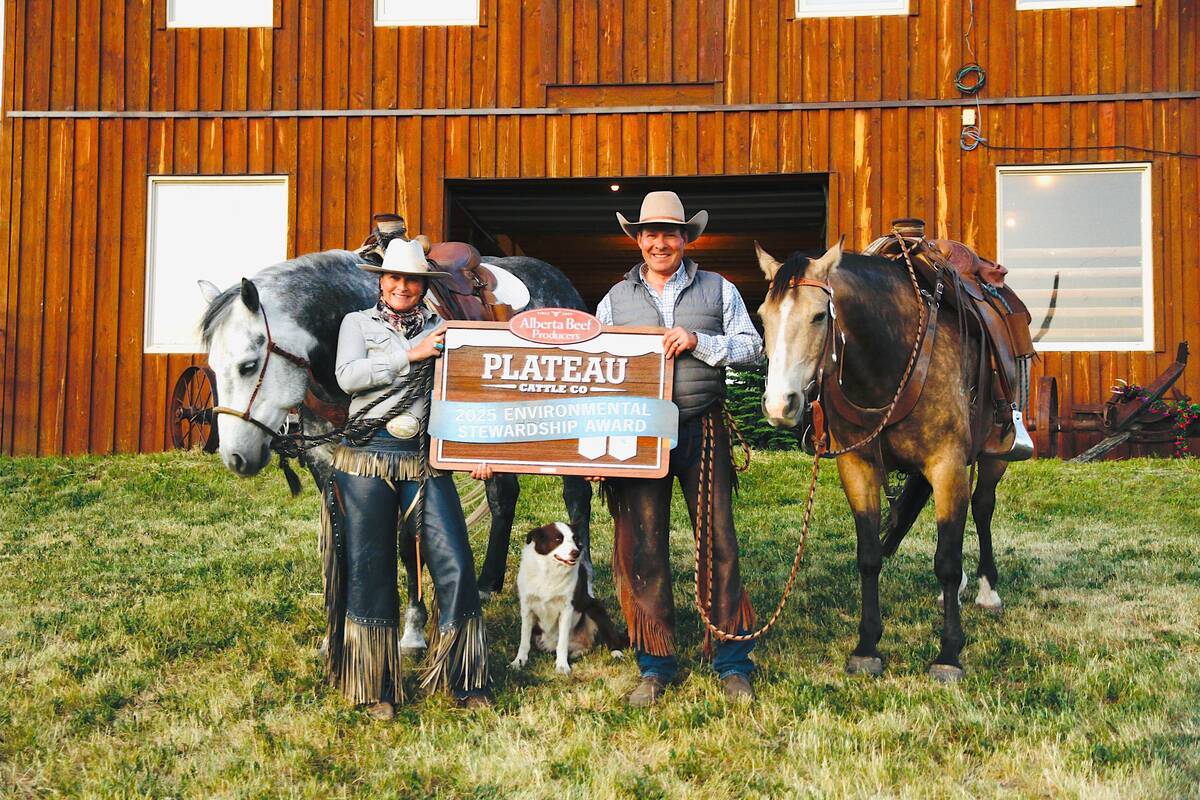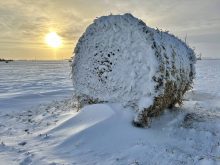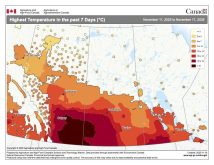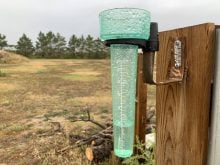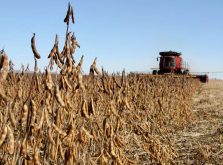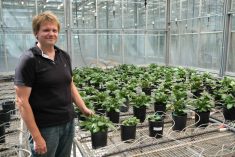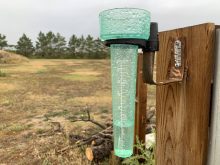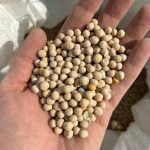On a wet Calgary day, like this one in late July, I always think if a robin can’t find a meal today, they need to turn in their wings and start walking back to United States Gulf Coast for the winter. The ground is getting saturated here and there are earthworms everywhere grabbing a bit of air in the drizzle.
I suggested my wife collect worms and set up a worm stand in the Bass Pro parking lot at Balzac, but so far she hasn’t jumped on that idea. The woman has no sense of business adventure.
The other misguided thought I have when it rains at my house in Calgary is that it must be raining like this everywhere. Unfortunately, such is not the case — certainly not this year.
Read Also
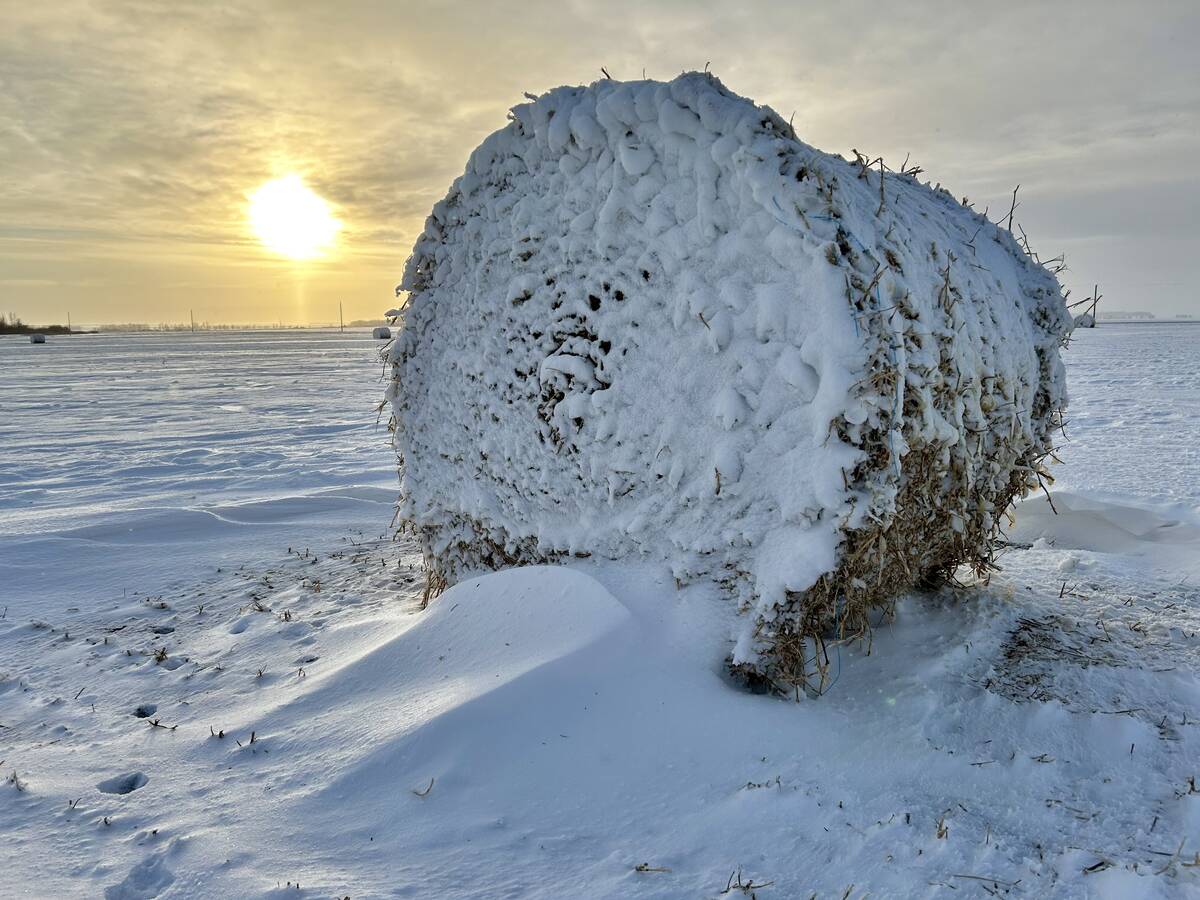
Prairie winter snowfall forecast 2025-2026
How much snow should farmers in Alberta and elsewhere on the Canadian Prairies expect for the rest of December 2025 and into January-February 2026?
What caught my attention in July were several rural municipalities that have declared states of emergency due to the drought conditions. Rain in July has certainly been welcome, but it hasn’t solved the moisture deficit problem. And not to be ungrateful, but it may be too late to help a lot crops this year.
According to the Alberta seasonal moisture and precipitation maps, there is a blessed “green” area representing about one-quarter to one-third of the province running from about Jasper to Rocky Mountain House to Red Deer and on through south-central Alberta (yes even a good chunk of the Special Areas) to the Saskatchewan border. There is also a good block of green south of Calgary including Lethbridge. The “green” represents areas that have received from 90 to 130 per cent of average precipitation this season. But other than that, about two-thirds to three-quarters of the province — north of Edmonton as well as the southeast corner — are coloured either yellow, orange or burnt orange indicating it is dry, really dry or drier than hell.
In mid-July, the Municipal District of Greenview, north of Edmonton — it’s a big MD that includes Fox Creek, Grande Cache and Valleyview — declared a state of emergency due to drought. And then the neighbouring county of Grande Prairie, which extends all the way west to the British Columbia border, also declared a state of emergency.
In southern Alberta, the M.D. of Pincher Creek on the west side of the province (from B.C. east to near Fort Macleod) in June declared a drought-related state of emergency, followed in July by the county of Cypress on the east side of Alberta that includes Medicine Hat, and a large area north of Medicine Hat, west toward Brooks, east to the Saskatchewan border and south to the U.S. border, also declared a state of emergency.
Bill Smith, the deputy reeve for the M.D. of Greenview and a fourth-generation rancher in the Grovedale area, told CBC Radio he can’t remember a time when the region saw this many consecutive years of dry conditions. Will there be enough winter feed for cattle?
“I should be getting 3,000 bales a year, and I’m probably going to hit 500 (bales this year),” says Smith. “Last year, there were about 1,000. This is about as severe as it’s gonna get for us.”
And from Cypress County, Josh Beck, who farms about 80 kilometres north of Medicine Hat, told a CBC reporter after about seven years of drought, there was reasonable moisture in 2024 and he was hopeful 2025 would be a good year as well. But such is not the case.
Beck, who crops barley and mustard along with running a cow-calf beef operation, says drought is beginning to feel like the status quo. Other than the inputs needed to get the crop seeded, he hasn’t spent much more since.
“Throwing all this money out in the spring and having no way to recover it year after year gets pretty hard on people,” he said.
And southern Alberta ranchers John Smith and Laura Laing, who own Plateau Cattle Company west of Nanton, said their area is experiencing its eighth year of drought. They’ve had to reduce cow herd numbers and adjust management accordingly.
How dry is it?
Even though their area received about five inches of rain in June, you’d never know it.
“It just disappeared,” said John. “It was a help for sure, but this area has been in a moisture deficit for so long that it immediately soaked away. We could use a three-inch rain every week for the rest of the summer.”
Despite the drought or perhaps in some ways because of it, Smith and Laing, who today run a herd of 450 Black Angus cattle, have not lost sight of their core values concerning looking after the environment, proper range management, protection of water resources and making efforts to protect and enhance wildlife habitat. Along with that, another pillar of their management is continually working to improve animal welfare and applying practices that contribute to reducing stress on livestock in all aspects of their operation.
For these efforts and more, Smith and Laing and Plateau Cattle Company were recognized earlier in July by being named the Alberta Beef Producers nominees for The Environmental Stewardship Award (TESA) — a national awards program through the Canadian Cattle Association.
And when they are not looking after cattle, for the past five years they have been working with other ranchers, rural residents and area municipalities leading the fight against a decision by the provincial government to consider coal mining exploration in the eastern slopes of the Rocky Mountains in the MD of Ranchlands.
The protest involves concern over the impact an open pit coal mine would have on air and water quality for a wide area of southern Alberta. In May, the Grassy Mountain Project, owned by Northback Holdings Corp. of Australia, received approval from Alberta’s Energy Regulator to proceed with exploration work. While the province says this is a one-off project, there is also concern it could be the wedge that holds open the door to more coal mining activity in an environmentally sensitive area. Concerned ranchers and landowners remain vigilant.


